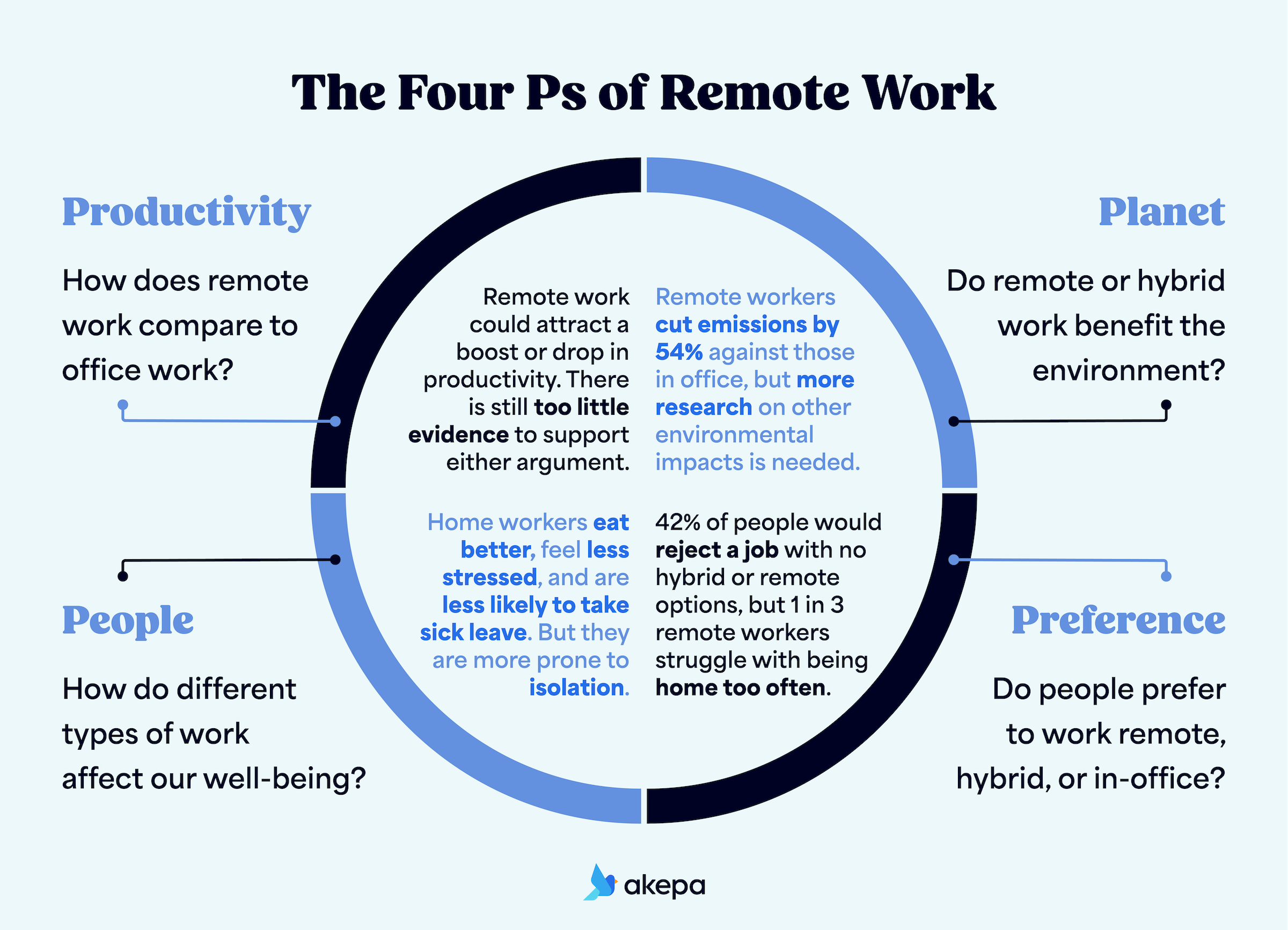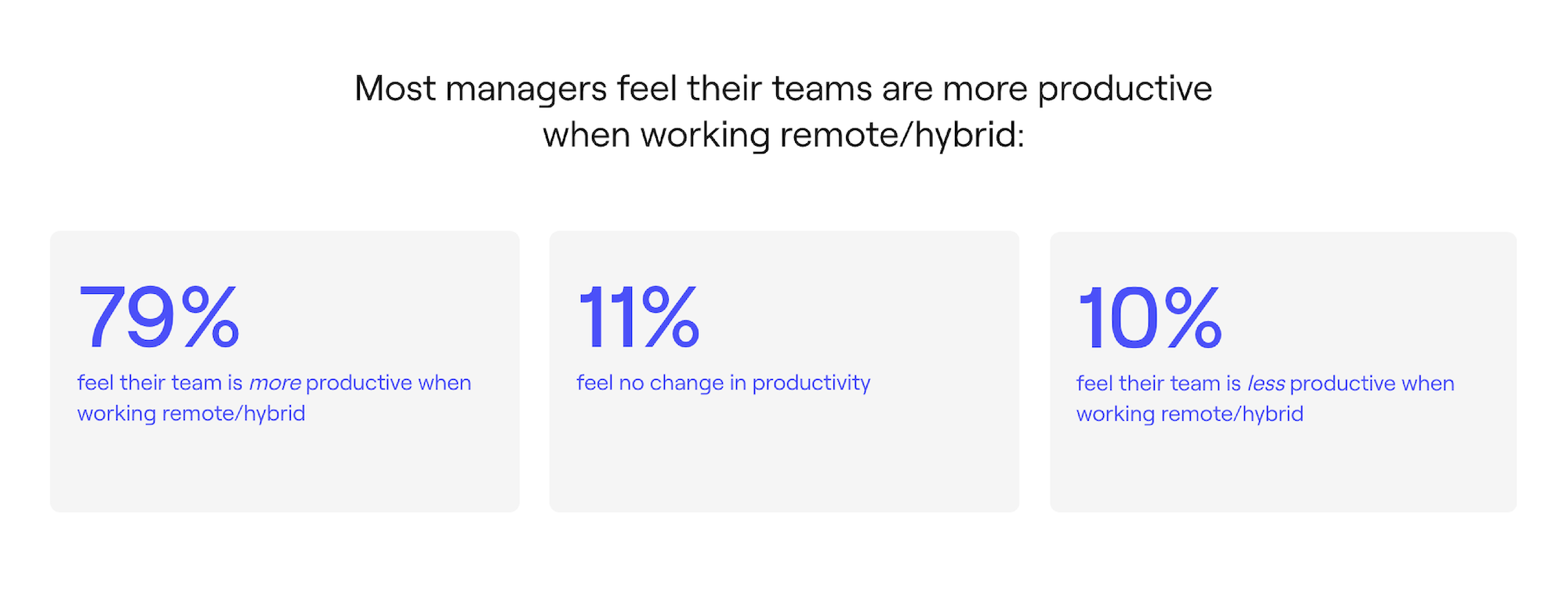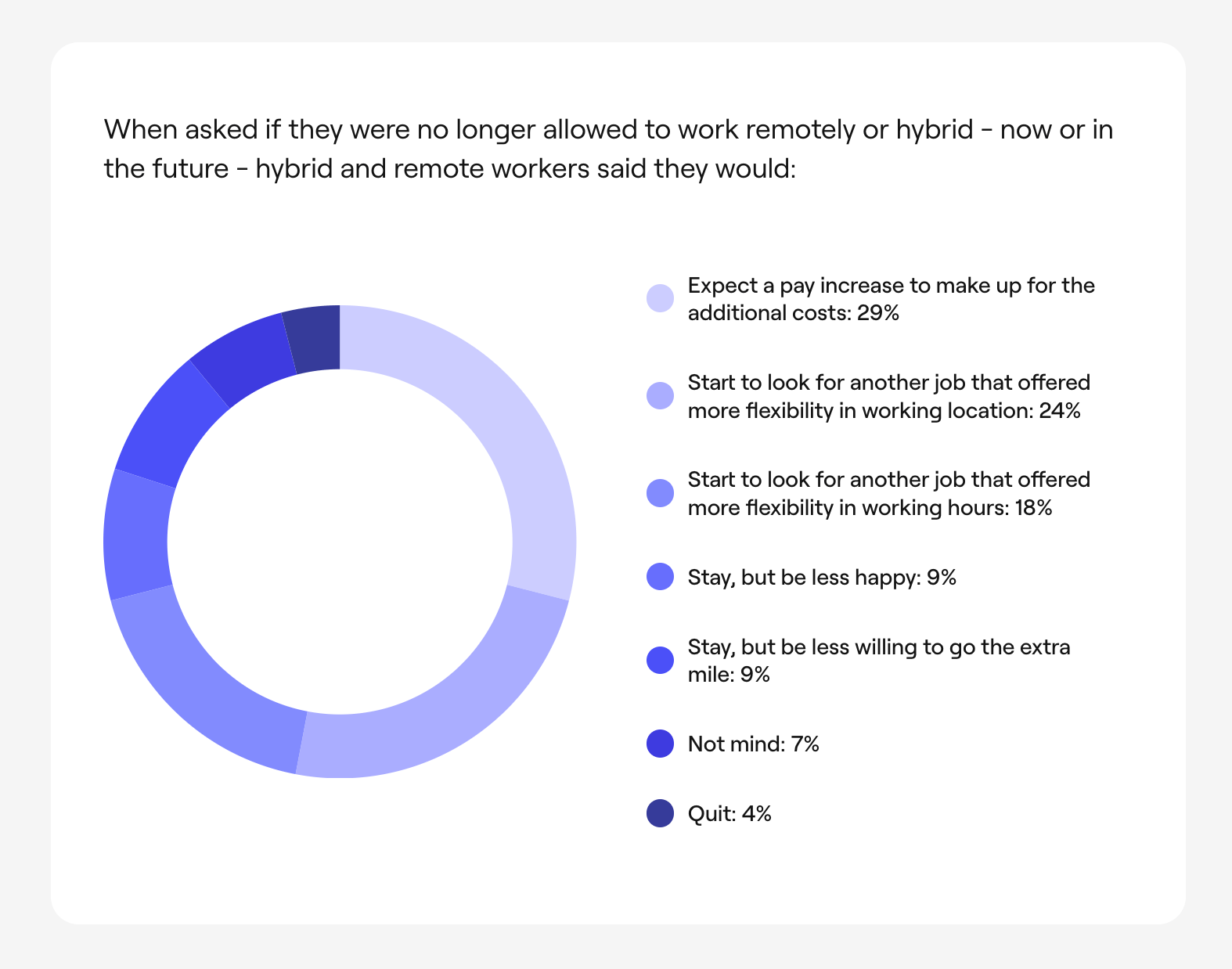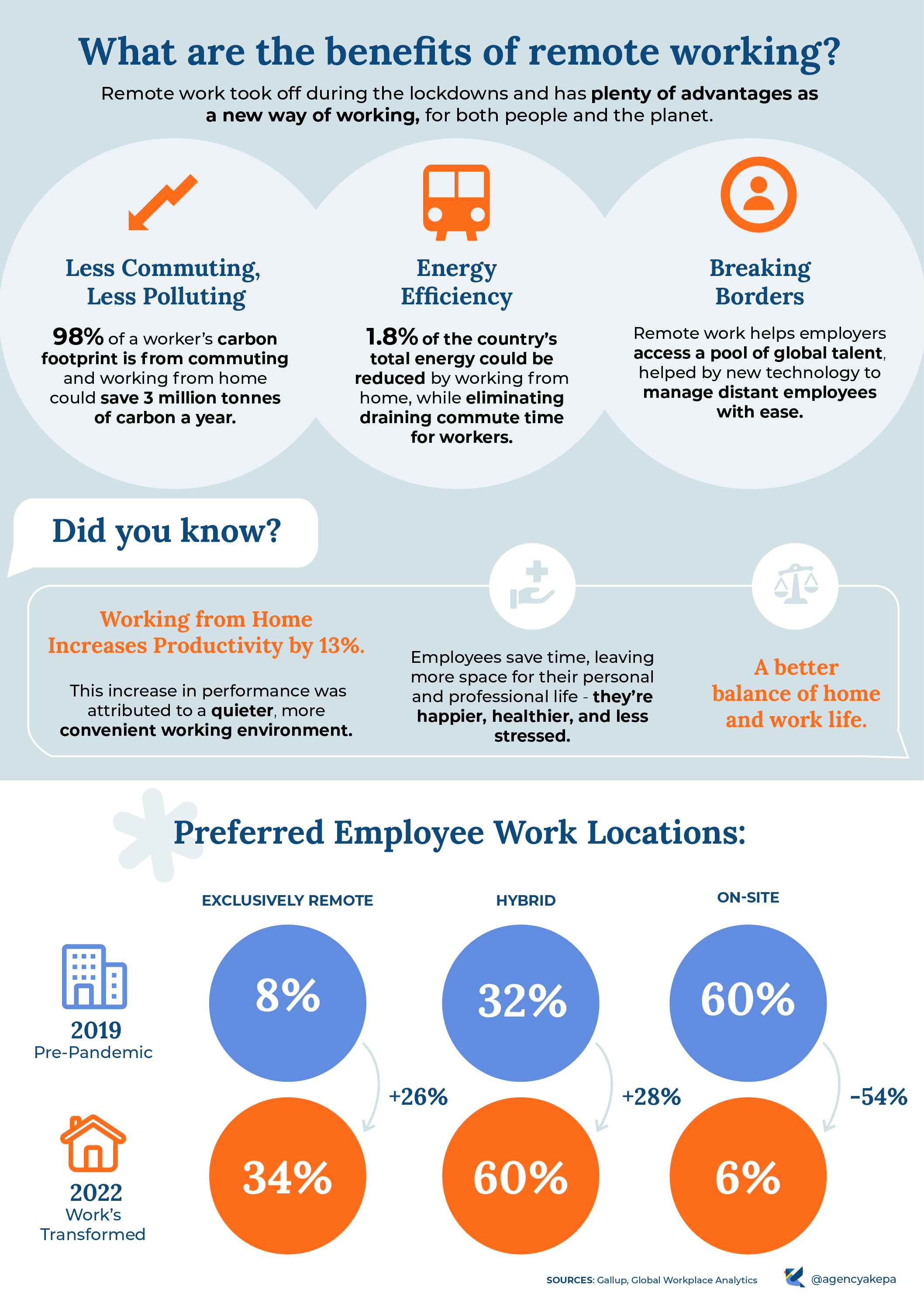A remote work revolution is afoot, or is it? Some say that people are being mandated back to the office, en-masse. Others believe work has changed forever. And what about getting stuff done – does remote work make us more or less productive? There’s a lot of confusion – and when there is, hard facts and stats can help get to the heart of the matter. So what’s really going on in the workplace?
As detective, Akepa has assembled 20+ key global facts that tell the story of the remote work shift – and mostly support it. But so as to not be partisan, we’ve also included a fair amount of key figures that suggest a few issues with the whole thing too.
We’ve broken these facts down into four manageable categories. Each addresses an area that the shift to remote work is impacting – and pleasingly, each begins with a p. The Four Ps of remote work, you could say: planet, people, productivity, and preference. Yep, we’ve coined it.
Contents (click to skip to the section):
- Facts on the impact on productivity
- Facts on the impact on people
- Facts on the impact on planet
- Facts on preference
Overview:
Time poor? Here’s a bite size portion of stats. Skip ahead for the full lot.

Facts to show the impact on productivity
When people consider remote work’s efficacy – and especially when bosses or C-suite executives do – one of the main aspects they consider is productivity and how it compares to office work. Let’s look at some recent studies in this area and see what they say.
1. One of the largest productivity studies yet – centered on work at Trip.com – has revealed that hybrid work causes no damage to performance while improving job satisfaction and reducing quit rates by one-third. Managers involved in the survey also changed from a perceived negative view of remote work, to a perceived positive one after the survey concluded (Nicholas Bloom, Stanford University, 2024).
2. Remote workers are more ‘focused’ – engaging in deeper work with fewer interruptions. In fact, remote workers could gain 62 hours of work that office workers lose from distractions like impromptu meetings (Hubstaff, 2024).
3. Yet, more negatively, a major study from Stanford University also suggested a 10% drop in productivity from fully remote work. The reasons being a lack of communication, mentorship, company culture, and difficulties with self-motivation (Stanford University, 2023).
4. Considering all the current data, the Federal Reserve Bank of San Francisco says there is still too little evidence to support the argument that remote work either harms or boosts productivity – after an analysis of current data and studies (Federal Reserve Bank of San Francisco, Economic Letter, 2024).
5. And this is echoed by an April 2024 study of 2,500 workers across different industries, which showed no significant productivity differences between people working in the office, hybrid, or fully remote (Pulse of the Profession, 2024).

Facts to show the impact on people
Despite the rise of AI, it’s still people that are getting work done. How a particular arrangement makes folk feel, and affects their physical and emotional wellbeing, can’t be underestimated. There’s a rich amount of research that has looked at this side, so far:
6. Working from home can lead to considerable health benefits, according to a meta-review of 1,930 papers. Home workers eat better, feel less stressed, and aren’t as likely to take sick leave. The downside is they can be overlooked for promotion and can also gain a tad more weight (Journal of Occupational Health, 2024).
7. Also on health: increasing workplace flexibility – including opportunities to work remotely – could have a positive impact on cardiovascular health, especially for older workers. So says a year-long study of over 1,500 workers. Some study participants experienced benefits equivalent to 5-10 years of age-related changes (Harvard University, 2023).
8. A study of over 1,000 folks in the UK revealed that fully remote, not hybrid, workers have the best self-reported work/life balance and productivity (The State of Wellbeing at Work Report, 2024).
9. Some remote workers can be more prone to isolation and related burnout, according to a study of 445 participants. Yet, the effects can be alleviated with targeted support (Colorado State University, 2023).
Facts to show the impact on the planet
There’s growing evidence that remote work, as well as hybrid work, can be better for the planet – although it’s largely the emissions benefits that have been studied, not aspects like circularity or waste. Here are a few stats that tell that story, while we await more research.
10. A comprehensive study revealed that people who work from home all the time cut emissions by 54% against those in office – while working remotely two or four days a week reduced an individual’s emissions by up to 29% (PNAS, 2023).
11. Another study based in Akepa’s ‘home’ city of Barcelona revealed that working from home during the pandemic had a significant impact on air quality. Continuing WFH, for two, three, or four days per week, could reduce nitrogen dioxide (NO2) emissions by 4%, 8%, and 10% respectively. Not bad considering NO2 is said to have over 250x the heating power of CO2! (Universitat Autònoma de Barcelona, Institute of Environmental Sciences & Technology, 2021).
12. Also from the height of the pandemic, back in 2020 when most people were remote working, the US energy administration reported a 15% drop in GHG emissions from travel (U.S. Energy Information Administration, 2021).
13. While remote work has a potential positive effect on the environment on the surface, it’s also a complex change. Like a lot of aspects of remote work, some say further research is needed to document the actual environmental impact of different remote working patterns (Akgüç et al. 2023).
Facts on preference
The pandemic turned office work on its head. Suddenly everyone could work from home without issue, whereas previously this arrangement was viewed suspiciously. Now that many folk have had the chance for a change, what are their preferences looking like?
14. 42% of European job seekers would reject an attractive job if there were no hybrid or fully remote arrangements available. (The Stepstone Group & Boston Consulting Group, 2024).
15. Since the pandemic, two-thirds (67%) of respondents said they’d like to work from home at least one day per week – and 25% to work from home at least 2-4 days (European Central Bank, 2023).
16. Despite CEO preference seeming firmly for office work, a 2024 study of over 1,000 top executives revealed that it’s not the big issue it seems. Other concerns like recession are way more important. Only 4% of global CEOs are prioritizing getting people back into the office full-time (The Conference Board, 2024).
17. Regardless of what job seekers want – a new 2024 study by US jobs website Ladders found that high-paying remote jobs fell nearly 60%, while hybrid job availability fell 95% over the past year. (Ladders, 2024).
18. From a survey of 3,000 remote workers, 98% of respondents would like to work remotely at least some of the time, for the rest of their careers. 91% of remote workers have a positive experience with remote work, with the top benefits being flexibility with time, flexibility in choosing where to live, and flexibility in choosing where to work. (Buffer, 2023).
19. From the same survey, 1 in 3 remote workers say that staying home too often is their biggest struggle with remote work – because they don’t have a reason to leave. 29% don’t have any struggles working remotely, and 23% feel their biggest struggle is loneliness. (Buffer, 2023).
20. Many employees will make sacrifices to achieve flexibility in where they work, as 62% would take a pay cut of 10% or more. If no longer able to work remotely, 29% of hybrid and remote workers would expect a pay increase to make up for additional costs. (Owl Labs, 2023).

Remote work facts & stats: infographic
Here are some bonus facts and stats about the benefits of remote work – this time in infographic form. Feel free to share this and give us a credit if you do!

Remember – remote work is still a work in progress…
So there we go. The facts above make it clear that remote work is making an impact – while causing quite a debate and disruption. Still, it’s early days and we’ll make sure to update this article with the latest studies, stats, and research. Feel free to use these to reinforce your story – whether it be in a pitch deck, a blog post, or just in a chat or an argument.
And remember, facts alone aren’t enough to tell a convincing story. If you’re looking for support telling the world about your mission, why not get in touch? We’ve supported businesses of all sizes to tell their stories through specialist digital marketing. Did we mention we’re 100% remote and working that way quite happily?
Interested in even more stats? We’ve also prepared this post on facts and stats about sustainability.



Leave a Reply